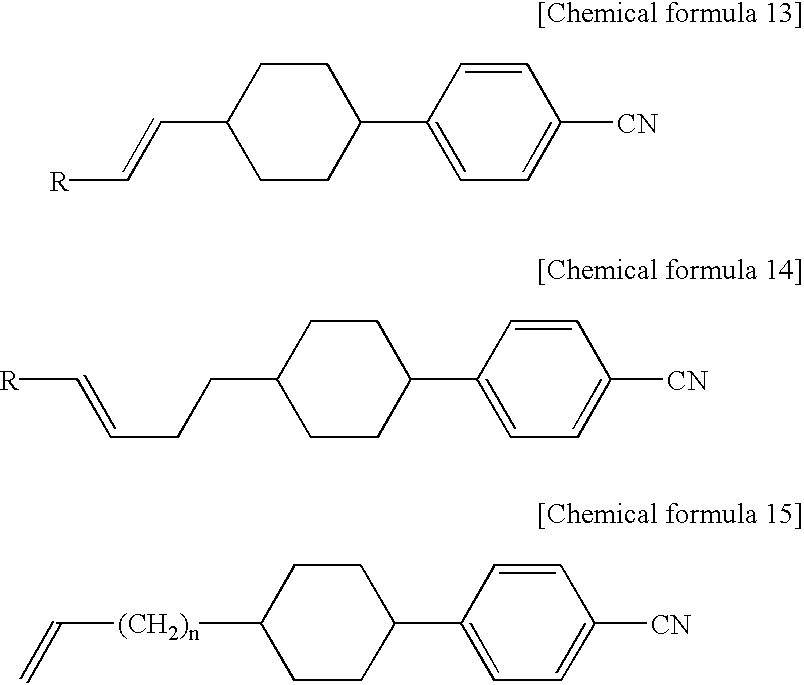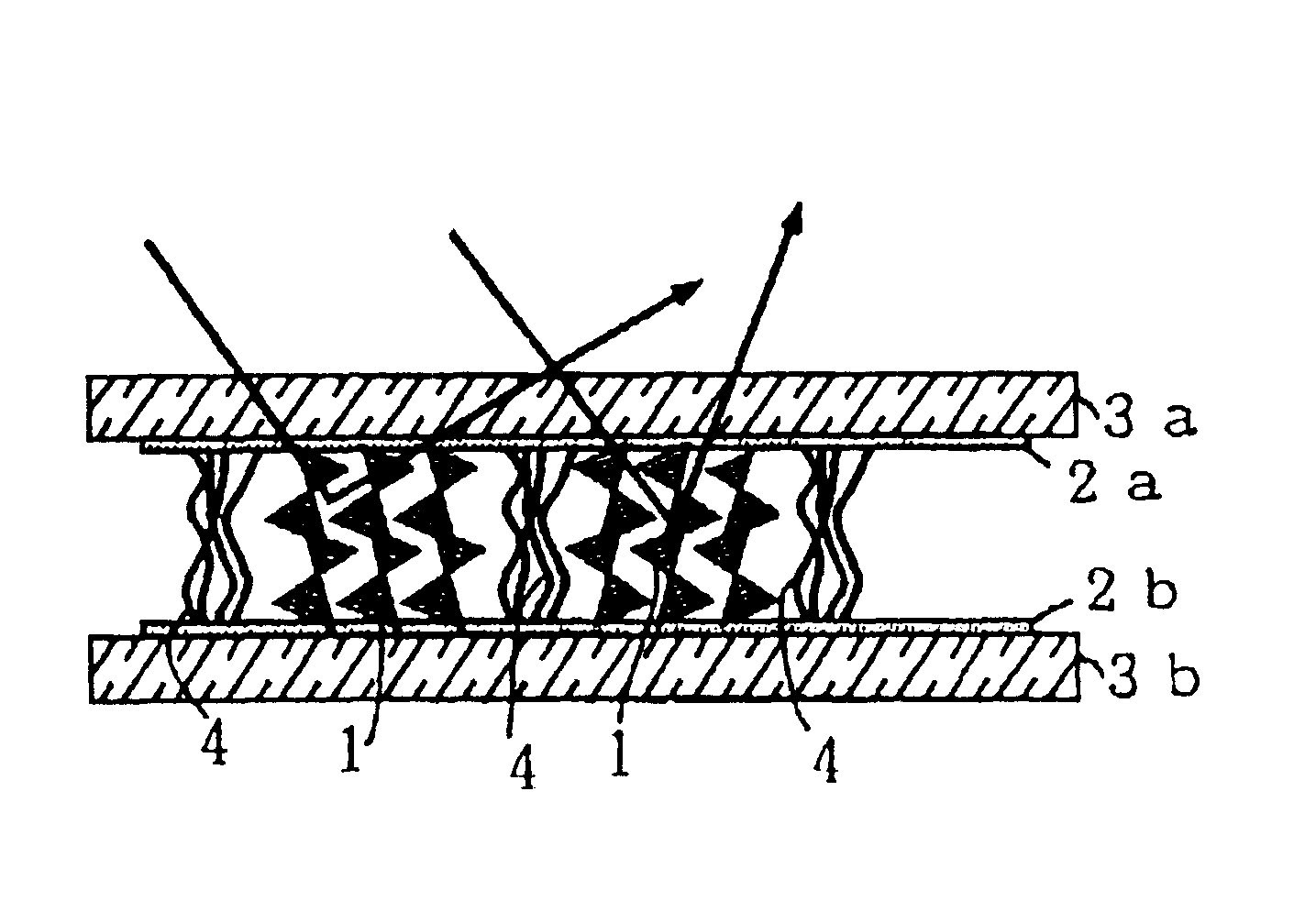Liquid crystal display and method for producing the same
a technology of liquid crystal display and liquid crystal, which is applied in the direction of optics, instruments, non-linear optics, etc., can solve the problems of insufficient reflection light, chromatic changes or glare by changing the visual angle, and difficulty in achieving a reflection display having a sufficient brightness
- Summary
- Abstract
- Description
- Claims
- Application Information
AI Technical Summary
Problems solved by technology
Method used
Image
Examples
Embodiment Construction
Nematic liquid E44 (Merk Corporation's make) of 72% by weight, and a chiral agent CB15 (Melc Corporation's make) of 38% by weight are sufficiently blended to produce a uniform mixture. The mixture was poured between two ITO glass substrates which is spaced by spacers at intervals of 6.7 .mu.m. No polymer network is observed in the obtained liquid crystal display because no monomer is doped thereon. Although the reflective index of the liquid crystal display was 35%, the reflection produced glare which is peculiar in the Bragg's reflection, wherein the reflected light changes, that is, green which is observed at the front side is turned into blue when the visual angle is changed. Also, by only slightly pressing the glass surface by a finger, the display completely disappears. At this time, it is considered that the liquid crystal particles are oriented as shown in FIG. 5.
PUM
| Property | Measurement | Unit |
|---|---|---|
| size | aaaaa | aaaaa |
| diameter | aaaaa | aaaaa |
| diameter | aaaaa | aaaaa |
Abstract
Description
Claims
Application Information
 Login to View More
Login to View More - R&D
- Intellectual Property
- Life Sciences
- Materials
- Tech Scout
- Unparalleled Data Quality
- Higher Quality Content
- 60% Fewer Hallucinations
Browse by: Latest US Patents, China's latest patents, Technical Efficacy Thesaurus, Application Domain, Technology Topic, Popular Technical Reports.
© 2025 PatSnap. All rights reserved.Legal|Privacy policy|Modern Slavery Act Transparency Statement|Sitemap|About US| Contact US: help@patsnap.com



